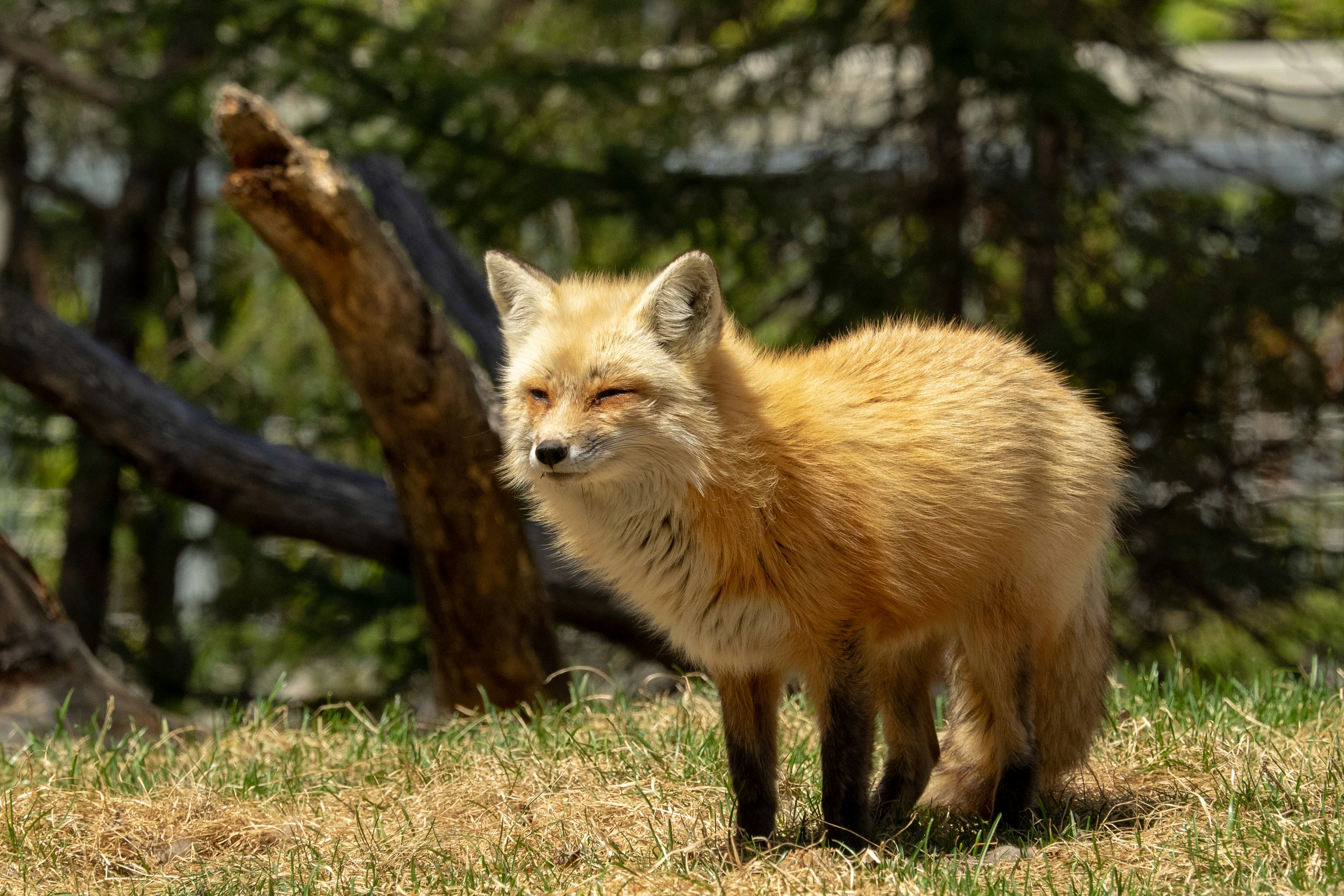Physical Characteristics of the Tibetan Fox
The Tibetan fox (Vulpes ferrilata), a remarkable inhabitant of the Tibetan Plateau, exhibits several physical characteristics that distinguish it from other fox species. This medium-sized canid typically measures between 60 to 70 centimeters in body length, with an additional tail length of around 30 centimeters. Weighing between 5 to 10 kilograms, the Tibetan fox is well-adapted to its high-altitude habitat.
One of the most striking features of the Tibetan fox is its unique square-shaped face, which is complemented by prominent, upright ears and a short snout. This facial structure not only provides an instantly recognizable profile but also serves a practical purpose by enhancing hearing ability, allowing it to detect prey amidst the vast expanses of the plateau. The coat is another defining physical characteristic; it is typically a mix of pale yellow to grayish-brown, providing camouflage against the rocky terrain and sparse vegetation. The thick fur helps insulate the fox against the harsh climatic conditions, helping it to thrive in an environment that can experience extreme cold temperatures.
Additionally, the Tibetan fox possesses a bushy tail, which serves both as a means of balance and a tool for communication with other foxes. Its limbs are sturdy and well-defined, enabling the animal to traverse rocky landscapes with agility and speed. These adaptations are particularly essential for survival in the challenging conditions of the Tibetan Plateau, where high altitudes, low oxygen levels, and significant temperature fluctuations prevail. Through its distinctive attributes, the Tibetan fox exemplifies the remarkable diversity and specialization of wildlife that can thrive in extreme environments.
Habitat and Distribution
The Tibetan fox (Vulpes ferrilata) is a remarkable species adapted to the unique ecological conditions of the Tibetan Plateau, which is characterized by its high altitude, varying temperatures, and diverse ecosystems. This fox is predominantly found across a significant portion of the Tibetan Plateau, spanning regions in China, India, and Nepal. Within these areas, the Tibetan fox typically inhabits grasslands, steppes, and arid regions, where it can effectively hunt for small mammals such as pikas and rodents.
Its geographical range is primarily concentrated in the Qinghai-Tibet Plateau, a vast expanse of land that showcases the rugged beauty and harsh living conditions of high-altitude environments. The Tibetan fox is particularly well-suited to elevations ranging from approximately 3,000 to 5,800 meters. At these altitudes, it navigates through rocky terrains and sparse vegetation, utilizing its keen senses to locate prey.
There are important ecological factors that influence the distribution of the Tibetan fox. These include the availability of food sources and suitable denning sites. Tibetan foxes are often seen in areas where human activity is limited, as they are sensitive to disturbances caused by agriculture and infrastructure development. The encroachment of human populations into their habitats has implications for their survival. Increased farming and urbanization can lead to habitat destruction, making it essential to understand the balance between conservation and human expansion in these regions.
Furthermore, the Tibetan fox’s distribution is affected by climatic conditions, as it relies heavily on the availability of prey that flourishes in these high-altitude environments. With climate change impacting weather patterns and ecosystems, the Tibetan fox may find its habitat altered, posing challenges for its continued existence. Consequently, studies on the habitat and distribution of the Tibetan fox are vital for creating effective conservation strategies to protect this iconic species on the Tibetan Plateau.
Diet and Hunting Behavior
The Tibetan fox (Vulpes ferrilata) exhibits a distinctive set of dietary habits that are finely attuned to the harsh environment of the Tibetan Plateau. This canid primarily preys on small mammals, with a particular emphasis on rodents, which constitute a significant portion of its diet. Species such as pikas, voles, and marmots provide essential nutrients that help sustain the Tibetan fox in its rugged habitat. Furthermore, foxes may occasionally consume insects and birds, although these account for a smaller fraction of their overall dietary intake.
The hunting behavior of the Tibetan fox is predominantly solitary and diurnal, adapting to the specific challenges of its environment. Unlike some other canids that hunt cooperatively, the Tibetan fox relies on stealth and keen observational skills to stalk its prey. This animal employs a range of hunting strategies, including employing its acute sense of hearing to locate prey hidden beneath the snow or ground cover. Once a target is identified, the fox often uses a technique known as “chasing,” where it pounces on its prey with remarkable speed and agility.
An intriguing aspect of the Tibetan fox’s hunting behavior involves its unique relationship with brown bears (Ursus arctos). The dynamic between these two species can be characterized as commensalism, where the Tibetan fox benefits from the bear’s foraging activities. As bears dig for roots and other food sources, they inadvertently disturb small animals residing in the vicinity, making them more accessible to observing foxes. This relationship optimizes hunting efficiency for the Tibetan fox, allowing it to capitalize on the efforts of the larger predator. The ability to adapt to such interactions underscores the fox’s remarkable survival skills in one of the most challenging ecosystems on Earth.
Threats and Conservation Status
The Tibetan fox (Vulpes ferrilata), renowned for its distinct appearance and adaptive skills, faces several significant threats that jeopardize its survival on the Tibetan Plateau. One of the most pressing issues is habitat loss, driven largely by human activities such as agricultural expansion and urban development. As pastoral communities grow and push their boundaries, the Tibetan fox’s natural habitat is increasingly fragmented, making it difficult for these animals to find suitable environments and breeding grounds. This encroachment not only reduces the available space for the Tibetan fox but also disrupts the delicate ecological balance essential for its prey, such as rodents and other small mammals, to thrive.
In addition to habitat degradation, the decline in prey populations due to overexploitation and environmental changes poses a substantial threat to the Tibetan fox’s long-term viability. As their primary food sources diminish, the Tibetan fox may struggle to find adequate nutrition, which can lead to decreased reproductive success and, consequently, a decline in their overall population. The International Union for Conservation of Nature (IUCN) Red List categorizes the Tibetan fox as “Least Concern,” indicating that, while it currently does not face immediate extinction, localized population declines have been observed in certain regions. Local conservationists have raised alarms about these declines, compounded by the lack of data regarding specific population estimates across its range.
Conservation efforts focusing on the Tibetan fox are vital to ensuring its protection and recovery. Initiatives include habitat preservation, monitoring populations, and fostering awareness among local communities about the importance of biodiversity. While the exact number of Tibetan foxes remaining globally is hard to pinpoint due to limited research, ongoing efforts aim to provide more comprehensive data, facilitating targeted conservation strategies. It is crucial for stakeholders and governments to work collaboratively to mitigate the threats faced by this iconic species, thereby conserving the rich biodiversity of the Tibetan Plateau.




